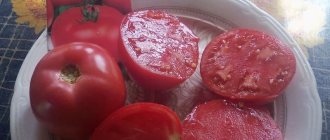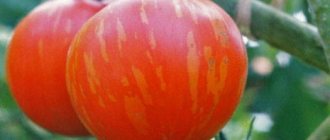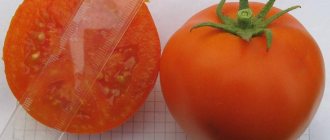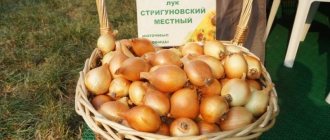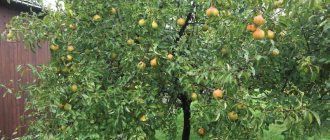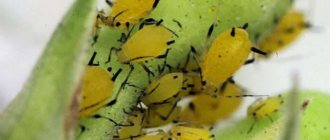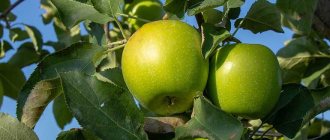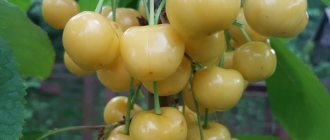History of variety development
This tomato variety was bred by Siberian breeders in the last quarter of the last century. After tests were carried out on experimental plots located in Siberia and the Urals, in 1996, the Zemlyak tomato was included in the Russian State Register.
The originators of the variety recommend growing this tomato in the following regions:
- Ural;
- West Siberian;
- East Siberian.
Common tomato Countryman. Brief overview, description of characteristics - video
But this variety also bears fruit well in more southern regions, and in the Krasnodar Territory and other regions with similar climatic conditions, Zemlyak tomato seeds are sown directly in open ground.
BEST TOMATOES!
Tomato Katya F1 Tomato Blagovest F1 Tomato variety Fat JACK
Tomato Zemlyak: characteristics and description of the variety, yield with photos and videos
The Zemlyak tomato is classified as a variety of Siberian origin. It is frost-resistant, strong, and has immunity to many diseases. They can even be grown in open ground. The fruits ripen quite early, and already in mid-summer they delight gardeners. Tomatoes are incredibly tasty and juicy.
The description of Zemlyak tomatoes can be read on the packaging. They will produce an excellent harvest if you study detailed characteristics about them and know the rules of care.
Tomato Countryman: description of an early variety
Tomato Zemlyak belongs to the early varieties of determinate type tomatoes
– from the moment the sprouts appear until the ripe tomatoes are harvested, a little more than 3 months pass.
The bushes are compact, with erect, fairly leafy shoots up to 0.8 m high.
On a note!
This tomato is intended for growing in garden beds; it is not recommended to grow the Zemlyak tomato in greenhouse conditions - you will have to take care of pollination of flowers to obtain a high yield.
Photo of tomato Countryman
The number of side shoots formed is average, with a large number of leaves. The foliage is medium in size, typically tomato, narrow, elongated, with sharp tips, soft emerald color.
The flowers are small in size, yellow in color, collected in racemes. The first of them appears above 6 or 7 permanent leaves, and each subsequent one appears after a couple of leaves. Each cluster can contain up to 15 ripening fruits
.
Ripe fruits of the Zemlyak tomato have a plum-shaped shape, their skin is slightly compacted, smooth, with a characteristic shine, rich red color at the stage of full ripening. The pulp is tender, sweetish, with several seed chambers (usually no more than 3), the number of seeds in them is small, but they are quite enough to be collected for further planting. The weight of ripe tomatoes is up to 90 g.
The presentation and taste of ripened Zemlyak tomatoes are good. The harvested crop can be transported to different distances and stored for a long time.
Rules of care
Those who have already planted the Zemlyak variety claim that caring for tomatoes is simple and inexpensive. But to increase productivity, it is necessary to strictly follow all the rules of agricultural technology.
To avoid drying out, yellowing and withering of young bushes in the first days after transplantation, it is necessary to provide shading from the sun.
You can use burlap, agrofibre. To prevent the sprouts from freezing overnight, cover them with film.
Watering
The main condition for full growth and high-quality fruiting is regular hydration.
- Tomatoes are watered for the first time a week after transplanting to the garden bed.
- All subsequent procedures are carried out as the soil dries, taking into account weather conditions. Water is poured at the root to eliminate the risk of the spread of fungal diseases on the leaves and stems.
Regular loosening after each watering will help prevent the formation of an earthen crust on the surface. During the loosening process, weeds are removed. For stability and to avoid drying out of the soil, the bushes are covered with garden soil.
Top dressing
Fertilizer application will have a positive effect on the yield and quality of vegetables.
- Tomatoes are fertilized for the first time 1-2 weeks after transplanting to the garden bed. 200 ml of urea or nitrophoska solution (15 g per bucket of water) is poured under each bush. Such nutrition will help plants quickly grow their root system and green mass.
- A week before flowering, the bushes are watered with a solution of superphosphate and potassium salt (1 tablespoon per 10 liters of water). Consumption - 0.5 l for each plant.
- For the third feeding during the fruit filling phase, the same composition is used.
Additionally, the bushes can be sprayed with a solution of boric acid (0.2 g per liter of hot water 55°C). Boron increases the immunity of tomatoes from diseases, improves flowering and improves the quality of the crop. The treatment is carried out twice - before flowering and after it.
All root feedings are combined with watering to avoid burning the roots and improve the quality of absorption of nutritional components.
Disease and pest control
The plant is resistant to diseases, but preventive measures will not hurt it.
To prevent infection with powdery mildew, late blight, verticillium and fusarium, the beds are treated twice with a solution of copper sulfate or Bordeaux mixture of 1% concentration.
The seedlings are sprayed for the first time 20 days after transplanting to the site, and the second time before flowering.
Insecticides are used to control slugs, aphids, spider mites and the Colorado potato beetle.
Additionally, spicy crops are planted on the site that repel parasites - mint, onions, garlic, marigolds. The row spacing is sprinkled with wood ash.
Tomato Countryman on August 25
Common tomato Zemlyak
